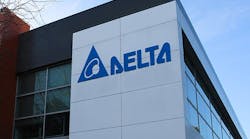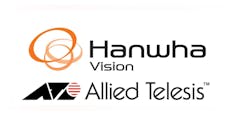Roaming the floor at ISC West, I came across a few companies that were touting new and improved video transmission, networking and storage products – fast-growing segments of the security industry that are being partially fueled by the IP transition.
Altronix, a company long known for its video and device power supply products, has entered the video networking space with its eBridge, which can transmit IP video and data over coaxial cable more than 2,000 feet without the need for repeaters. "Customers have been asking for a product like this," Altronix's Kirby Han said.
The transmission product spurred a three-way technology collaboration among Altronix, Intersil and Sony to create the hybrid solution. In fact Sony cameras integrated with chips from Intersil can be used with the eBridge – but instead of needing to deploy both a receiver and a transceiver, only the receiver is needed with the Sony hybrid cameras. According to Han, it is Altronix's first major integration with a camera manufacturer. "We are breaking new ground," he said.
NVT is a company that has gained recognition for its analog-based video transmission products for the last 20 years; however, the company announced it has released its first IP-based transmission product. The NVT Ethernet-over-Coax product range enables end-users to connect and power IP cameras over installed coax cable, at distances beyond PoE.
While it may not mean that analog technology is dead, the achievement marked a significant step for the company, according to Guy Apple, the company's VP of marketing. "It may not be the tipping point for IP in the industry, but the tipping point for NVT is finally here," he said.
Video storage appliance vendor Intransa is focused on customer service, as Jeff Whitney showed me an outline of three service products designed to give security directors peace of mind – and a solid backup. The company is now providing free 24/7 support and component health monitoring from its monitoring centers in the U.S. and Asia.
"A customer can have two or three (storage) hard drives completely fail and not even know about it because of RAID," Whitney said. "This is kind of a central station to monitor components."
He went on to explain how the company can monitor for failures from a central location, and inform clients for free in a reactive fashion. There is also a pay service that offers proactive monitoring of the components.
That's all I saw in the transmission/storage area on Wednesday, but I will be adding to this story tomorrow with some more vendor roundups. Stay tuned for a second report.



